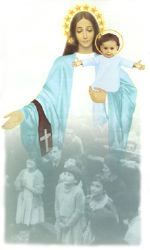Garabandal 1966 (Fr. Materne Laffineur)
GARABANDAL 1966
This article is most likely from a conference by Fr. Materne Lafflneur {Archive of Francois Turner). French translation by Rev. Deacon Andrew Usera
Reprinted with kind permission from Garabandal Journal /November-December 2019
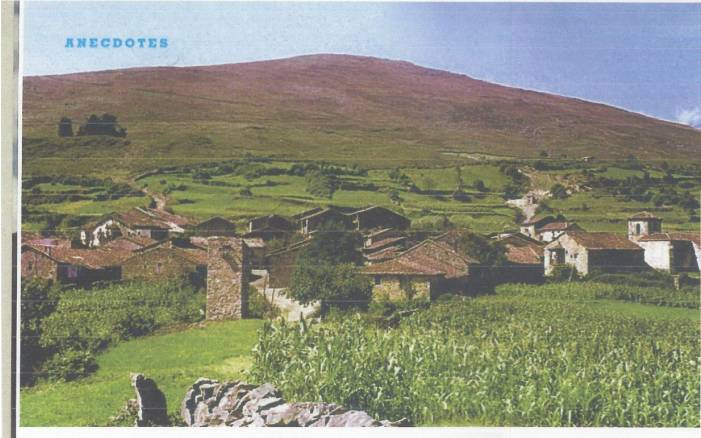
Conchita left for Pamplona (Spain) on February 7,1966, her 17th birthday, to enter the school of the Discalced Carmelite Missionaries. At that time the village had become a place of trial for the seers.
Consecrated on August 15, 1965, Bishop Vicente Puchol Montis was installed on the 17th of the same month. Before the end of the year, changes occurred in the Cantabrian Mountains. Father Valentin Marichalar, the priest during the Apparitions, was confined to Cosío and prohibited from going up to Garabandal where he had served for 10 years. He was replaced by Fr. José Olano, a young priest of 25 years of age, who would live in the village. His formal mission was to snuff out the matter of the Apparitions. He did not hide, but in his naivete would tell foreigners that “even if the Miracle were to take place, this would prove nothing regarding the subject matter that interests you.” He even went further. Intelligent and active, and having no work other than caring for this community of 280 docile parishioners living in 70 homes each butting up against the other, which had housed an 80-year-old priest from France, he attached himself skillfully and without scruples to the seers, their families and the entire small community. He succeeded at least up to this date, in seducing the families by his devotion to the school-age children, giving to the adolescents and youngsters the distractions that their colleagues in the cities had. He himself organized dances and parties at night lasting up to four o’clock in the morning and dispensed his flock from requirements regarding rest, provided that they participate in the construction of a local movie house!
As a result of these appearances, one was able to perceive less of a religious fervor exercised by the village. Children, adolescents, the youth and many women went over to the side of Father Olano. The majority of the men, by and large, watched and prudently remained silent. So this is what came to pass in this previously very special land, something that the whole world should know about today. On June 26,1967, four children aged 7 to 12 years of age mocked four foreigners who prayed at the Pines. They had no regard for one of them, the blind American Joey Lomangino. As if to mark the success of the apostolate of their pastor, not only did they mock the reverence of the visitors, but went as far as flinging cow manure on the branches of the pine tree where the Virgin had appeared most often, the preferred tree of the visionaries, underneath which Conchita had placed some rocks to clumsily make an altar. Yes, it is true. We were able to verify this sacrilege the day before yesterday. They also tried to do damage in the calleja, the rocky path that led up to the Pines. Fortunately, they mistook the rocks upon which Conchita had stood on the 18th of June of 1961 and the 18th of June of 1965.
In this hideous profaned prison of Garabandal, the Visionaries struggled as best they could. At times, and this was often, they would find themselves grappling with the young Father Olano, whether in the sacristy or elsewhere, two or three at a time, or else individually.
PRISON AT PAMPLONA
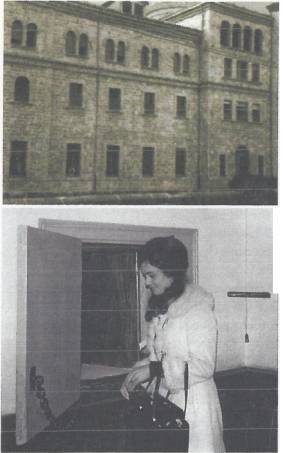
in Pamplona and Conchita’s entry
Garabandal was a prison, but for Conchita, Pamplona was especially one. We know that the superior of the school in Pamplona, where our little youngster came as a boarder, did not believe in the Apparitions. Conchita: she was unaware that we had written: “The adolescent on February 7, 1966, entered the home of pain.” We added the following: “We ourselves could never have imagined what was going to happen.”
From her early years, after the age of five, Conchita wanted to become a religious, as confirmed by her mother. Finally, she had reached her goal; she would shortly become the bride of Jesus and a Discalced Carmelite Missionary, lost among the Blacks in Africa. She was bursting with happiness, supernaturally transfigured, as occurred the preceding 8th of September at Torrelavega, at the moment when we said our goodbyes.
Read and reread all related passages of The Star in the Mountain, and you will understand the deep triumphant joy that this vocation represented for Conchita. Only six days later, six days exactly on February 13th, Jesus spoke to her. This is the famous interior locution about which we did not wish to talk about earlier, inasmuch as a locution is not something that one can control as one can with an ecstasy. Today we have come here because she is at the true beginning of her lasting spiritual drama, because now we have the absolute and definitive proof that she believed and that she still believes as strongly as steel. She goes into great length and detail when dealing with this locution. Let us quote a few lines which impressed us: “Did you no tell me, Conchita that you wished to follow My will? Well then, now it is yours that you wish to accomplish. Will it be like this during your whole life?
Have you ever sensed that I was calling you to become My spouse? No.
That is because I have not called you.”
What a drama unfolded at a crossroads, at an age when one chooses one’s state in life! At this moment in time, a year and a half after this locution, Conchita was still overwhelmed, secretly disoriented in the depths of her being, in the most interior part of her spiritual life, to the point of even stating that after the Miracle, she would become a cloistered Carmelite behind the grilles.
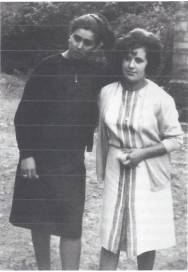
In the midst of her supernatural development in the school, she cried on the occasion of a student taking the habit, something she knew she would never participate in. At the same time, she began having throbbing doubts as to the real presence of Jesus in the Holy Eucharist. She went as far as confiding: “I have the impression of having chains around my calves that prevented me from approaching the Communion rail.” It would take all of the wisdom and the doctrinal firmness of her mother, Aniceta, to pacify Conchita’s soul that was hurting, at least momentarily during the Easter vacation.
Let us comment on how things precipitated. Easter occurred on the 10th
of April of 1966, and between this date and the preceding 7th of February, there had been two intervening months. Therefore there were only nine weeks for Divine Providence to lead Conchita from the joy of entering [the school] at Pamplona to the refusal [by Our Lord] of her total donation and the intellectual pain of her Eucharistic doubts. In nine weeks, her heart and her intellect were nailed to the cross. This was nothing but her preparation for the test of tests.
During this same Easter vacation at the beginning of April of 1966, she encountered Loli, her confidante, and the [new] priest of Garabandal. In the previous October of 1965, while in the school at Borja, the Virgin had told Loli in an interior locution: “You will doubt your apparitions.” Loli, who had been forsaken since the month of February, confided her doubts to her entourage. She would speak often, whether in the sacristy or at her home, and with Father Olano, without realizing that she was placing herself in the wolf’s mouth. What was Conchita to do following these conversations, but to follow her little friend in resorting to the same confidant, who additionally was the only confessor in the village?
Conchita returned to Pamplona around the 20th of April. She would remain there for approximately two months, just long enough for the third drama to unfold.
At the beginning of the third trimester in a school like hers, there was traditionally a three day retreat. The preacher would not be the chaplain, but a city priest of some 35-38 years of age. By chance, the priest, like the Superior, did not believe in the Apparitions. This should not come as a great surprise, inasmuch as Pamplona is at present the most hateful adversary of Garabandal.
Conchita, who at this precise moment was literally submerged as a result of the locution just two months previously on February 13, her recurrent doubts regarding the Eucharist and shaken by the confidences that Loli had shared and the exchanges with her pastor, also began to doubt the Apparitions. Without any mistrust, seeing in him only a priest for whom she had a lot of respect and affection, she opened her soul to this preacher whom she did not know. She then passed to the confessional…
His response: “Unless you promise me that you will tell the village and those who go there that you have fooled them, I will refuse you absolution.”
Open your eyes, don’t believe your ears, do you have the impression that a diabolic thunder has just fallen in our midst? I repeat to you: “Conchita, unless you promise me that you will tell the village and those who go there that you have fooled them, I will refuse you absolution.” Was this reckless, thoughtlessness, inexperience, an abuse of power or profanation? Yes, all at the same time. And we will demonstrate this quickly and explain your feelings of disgust as well-heeled Catholics. [NOTE: The original French text of this last sentence is rather convoluted, but this is the best I could derive from it.] In the context of her Eucharistic doubts, the standing confessor of the school responded to her that “the temptation to which one does not consent is not a sin. Rest assured that the light shall return when you have done the meditation for the unbelievers.”
What would you have thought if the matter would have been posed as follows: “If you do not promise to tell the village and those who go up there that Jesus is not present in the consecrated Host, I will refuse you absolution…”
You look at us scared at such a possibility! But that is exactly the parallel attitude to this blasphemy on the part of the young preacher from Pamplona. Whether he was an adversary of Garabandal or not, he should have told Conchita in lieu of allowing the enormity of the preceding scandal to stand: “My little one, to doubt is not a fault. Come now, reflect, consult with experienced priests. If Garabandal is true, it is normal for you to pay the price. If everything is false, one will indeed see it. Carry your cross patiently…. Go in peace. I will pray for you.”
Not only did he lack this basic prudence and fraternal charity, but once having made his choice, he persevered in his hateful choice.
First, Conchita was banned from talking about her doubts regarding the apparitions to her family and friends. Then, once the school’s trimester had ended, three or four letters arrived at Garabandal to remind the adolescent about her promise, which meant that she had not been absolved in conscience unless she kept her promise. Try to imagine the terrible spiritual situation she faced, not being able to speak to her mother, nor her brothers, nor any priest who was favorable to Garabandal, not having any counselor or comforter other than Father Olano, who at that time was only 26 years old!
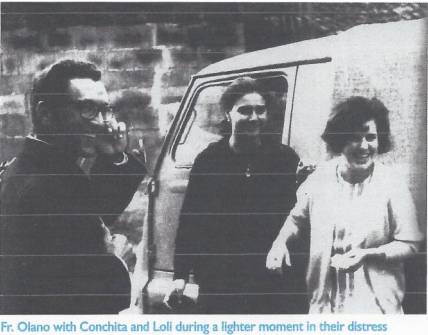
PRISON AT GARABANDAL
Now, without anyone knowing anything, this one [Father Olano] secretly went further under the orders of his confrere in Pamplona: “Yes, Conchita, he is correct, and you must swear on the Gospels that you have lied.”
Everything that has preceded are things that we know for certain, and we take full responsibility for repeating them. However, we add something more. In the middle of July of 1966, we went up to Garabandal totally ignorant of what had transpired since the preceding 7th of February, inasmuch as we were charged with delivering a message to Conchita from Rome. Oh! It was very short, just a few words. “You need to select a confessor, an anciano, that is to say, a priest who has years and experience.” Nothing that resembled pressure, but simply a directive that was wisdom itself. Conchita opened her eyes wide; she looked at us in silence and cried….
Obviously we did not understand what the tears were about, but today they are our light that shines on the past and clarifies what transpired afterwards.
Indeed, during the February 13th locution, Jesus insisted: “Did you not tell Me, Conchita, that you wished to follow My will? Well then, now it is yours that you wish to accomplish. Will it be like this during your whole life?” Then, later He added: “Understand intelligently, spiritually what I have told you. Do not close the eyes of your soul. Do not let yourself be deceived by anyone.”
Do not let yourself be deceived by anyone! Conchita, listen to Jesus, listen to Rome. Listen also to other words that came from Italy at the start of August. Beware of the two young priests who abused their priesthood and you! Conchita beware! [It does not appear that these were words communicated by Jesus but what the writer either told Conchita or would have liked to tell Conchita. Hard to tell.]
August 15, 1966 at 10:00 a.m. To anyone who asked her about Loli as it pertained to the state of her soul at that moment, Conchita would reply: “Loli doubts.” “What about you Conchita?” “Me, at the bottom of my heart, no,” then pointing her index finger to her forehead, added: “There, yes, I also doubt.” For the first time, and only to this interlocutor, aside from the two known young priests, the adolescent released her terrible secret. Very reservedly, the interlocutor did not press her further. Subsequently, they separated quickly and went into the village where witnesses pointed out that “at 4:00 p.m., Conchita laughed as usual and seemed absolutely serene.”
August 15, 1966 at 5:00 p.m. Listen to the same witnesses.“Now, an hour later, with Loli, Conchita departed from seeing her priest. Her face was troubled. Nervous and restless, she told us in passing: “Pray for me, I am in great need [of prayer].”
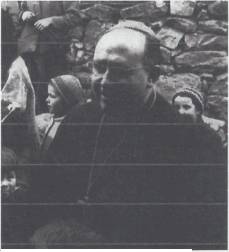
What had just happened? Here is the truth, and no one could have known for several months….
A dialogue had ensued during which Conchita, to free her conscience from the weight of her confession at Pamplona for which the absolution had been conditional, relying on the latest advice from Father Olano, had chosen to undergo a trial by fire, consisting of a meeting with Bishop Puchol Montis. On the occasion of such a meeting, she would finally keep her promise which had been sacrilegiously extracted from her naïve good faith.
Here we should repeat that neither Aniceta, her sons Serafin and Miguel, nor other folks in Garabandal, knew anything. They all were totally unaware, especially of the terrible decision she had made.
PRISON AT PAMPLONA
August 28, 1966 Taken by her mother, Conchita went back to Pamplona guarding her secret. As she had done the previous 7th of February, Aniceta issued to the [Mother] Superior formal orders prohibiting anyone from seeing her daughter without her personal authorization. Poor, poor Aniceta who was ignorant of the parish priest’s involvement. She was obviously oblivious of what was going to happen in a couple of days, despite her admonitions.
August 30, 1966 Five and a half months after the locution of February 13, Bishop Puchol, accompanied by his Vicar General (you will recall, a priest of Pamplona), a secretary, and by coincidence the priest of Garabandal, knocked at the door of the school. The Bishop of Santander was outside of the limits of his diocese, and when the Superior asked, he was not able to show Aniceta’s authorization. It did not matter when she said, “But Conchita is a minor, Monsignor [Bishops in Spain are addressed as Monsignor]. She cannot be interrogated alone.” Nothing mattered. The doors of the school were opened, Aniceta’s formal directives were ignored and the interview lasting seven hours began.
While we await the publishing of what would ultimately be made known by the shame of those who were guilty, let us summarize very briefly, and for this as always, we will take the least favorable position. “Monsignor, I no longer remember having seen the Virgin, but the Diario (my 54 page journal in which I tell everything) is true.” And the adolescent quoted from the diary from memory without any mistakes. “Monsignor, I did not see the Virgin, but the Message is true, but the Miracle of the Host is true, but the Great Miracle will come….”
During the course of this endless interrogatory, which was interrupted for lunch, on more than one occasion the bishop had tears in his eyes. At the end, commenting on a ring that Conchita wore on her finger, he asked: “What about this ring, Conchita?” “Monsignor, it was kissed by the Virgin.” “Give it to me.” Adding (this time with a mischievous air), “so that I who did not see her, can nevertheless kiss it as well; one never knows.”
And there you have it; this is what was termed in Santander and also elsewhere “Conchita’s denial”. What an error! It is necessary, and now more than ever, with the greatest insistence to affirm and repeat that these were Conchita’s “contradictions” during her trial by fire.
To deny and to contradict oneself are basically and essentially different. Especially, as we will explain further on, when in these matters, one needs to take into account what transpired between the 7th of February and the 30th of August (which we have already summarized). [This included] the ill will of the adversaries, the silence that was imposed on Conchita on August 30 (and on others several days later), the visible intervention of the devil, the imperfections of the visionaries and their families, the inadequacy of certain of their friends in Garabandal, the Virgin’s prophecy which she herself had issued during an ecstasy of the four girls in 1961, and the mysterious designs of Divine Providence. This was spoken about very clearly in a locution that ended with this small dialogue: “I asked Him if Rome also would not believe any longer. He did not answer me. Then He told me: ‘Do not worry yourself about what they believe or not believe. It is I Who will do everything, but I will also give you suffering. I go before those who suffer for Me.’” We will return to this at the proper moment.
Reprinted with kind permission from Garabandal Journal /November-December 2019

